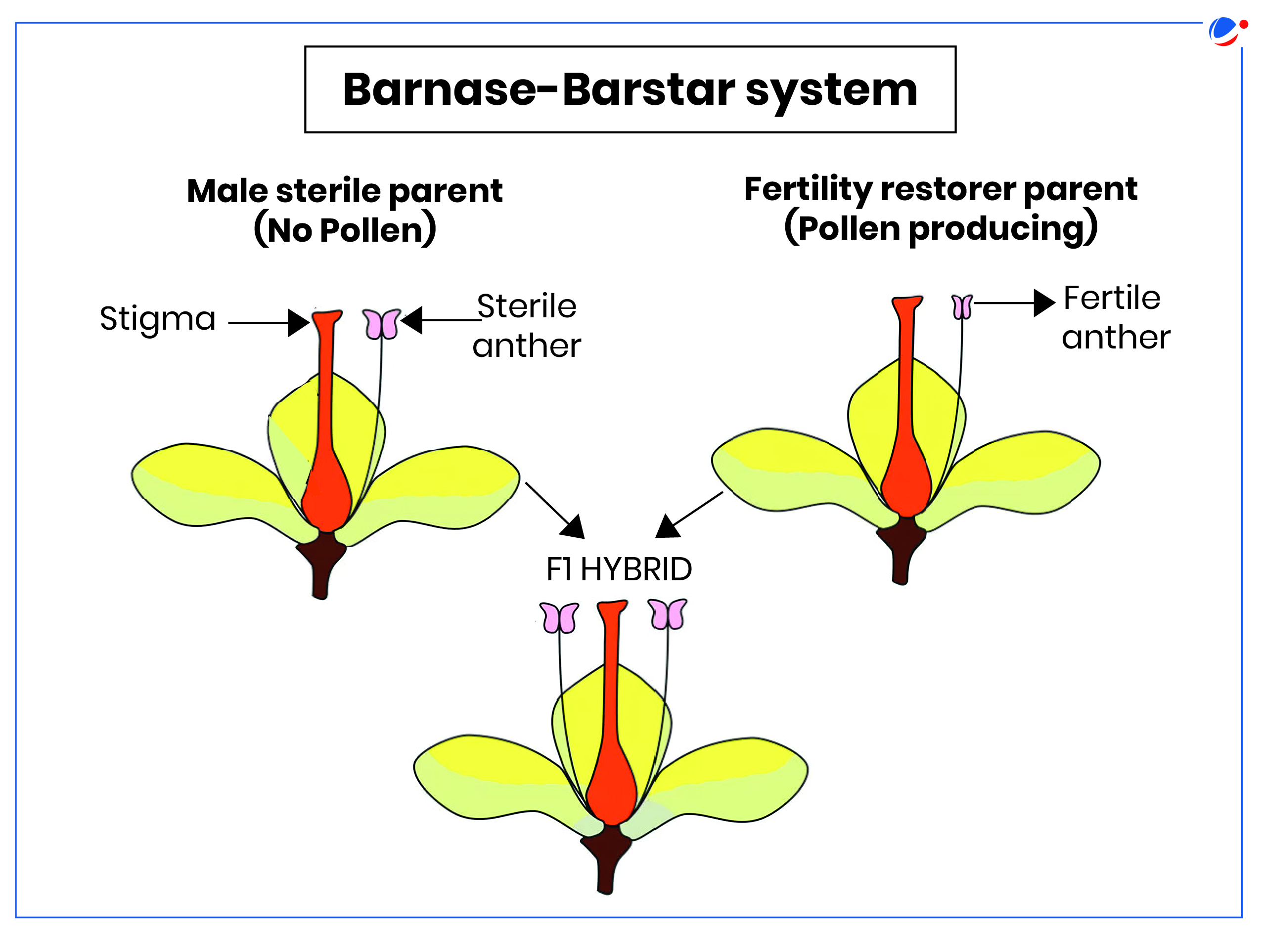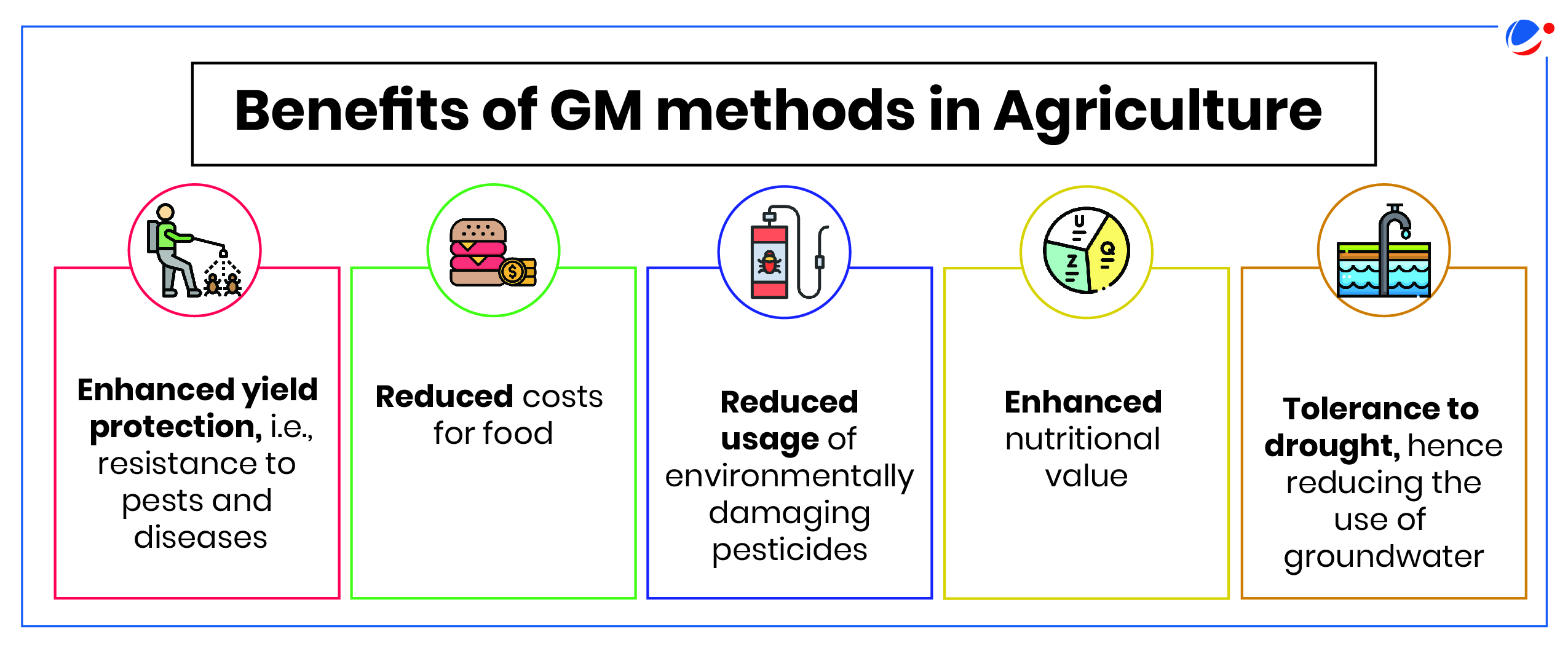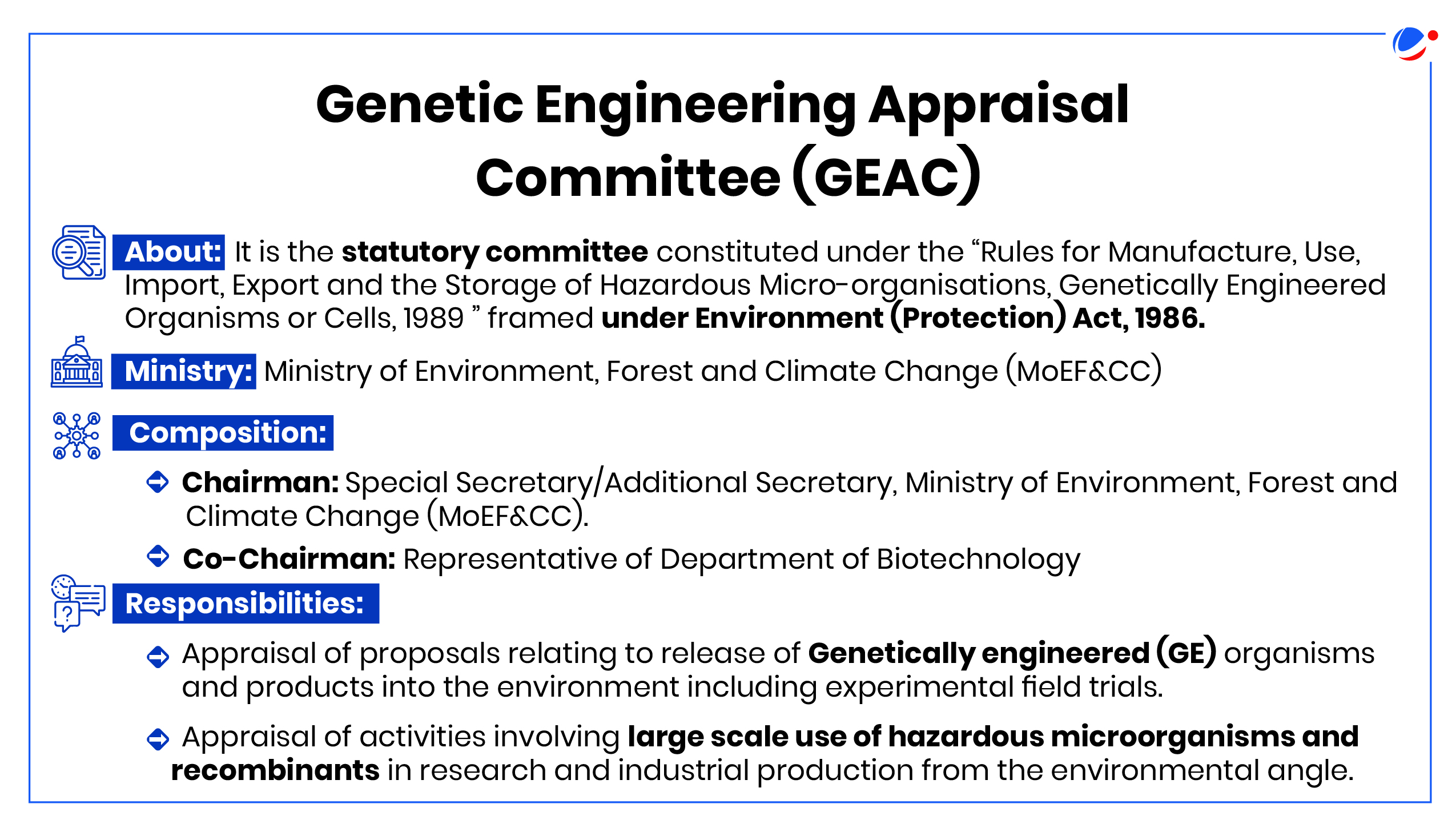Why in the News?
The Supreme Court pronounced a split verdict on the validity of the decision of Union government granting approval for environmental release of genetically modified (GM) mustard crops in 2022.
More on the News
- Spilt Verdict of 2-Judge bench:
- One Judge held that approval given by the Genetic Engineering Appraisal Committee (GEAC) in 2022 is "vitiated"(defective) and contrary to the principle of public interest.
- The Judge noted that the FSSAI has not conducted any study on the impact of GM mustard on health.
- Second Judge held that the approval was not vitiated. The Judge has issued directions for strict monitoring by the Union Government.
- One Judge held that approval given by the Genetic Engineering Appraisal Committee (GEAC) in 2022 is "vitiated"(defective) and contrary to the principle of public interest.
- Directions passed by the court: The Union of India has to evolve a national policy regarding GM crops. The policy be framed in consultation with all stake holders, including states, farmers groups etc.
What is Genetic Modification?
- It involves altering an organism's DNA. This can be done by altering an existing section of DNA, or by adding a new gene altogether.
- Working: When a scientist performs genetic modification to a plant, they insert a foreign gene (called transgene) in the plant's own genes.
- This could be introduced from one plant to another plant, from a plant to an animal, or from a microorganism to a plant.
About GM Mustard Crop (DMH-11)
- DMH-11 is developed by Centre for Genetic Manipulation of Crop Plants (Delhi University).
- It paves the way for the commercialisation of the country's first GM food crop.
- GM mustard has not been released for commercial cultivation yet.
- DMH-11 is a result of a crossing between two mustard varieties ('Varuna' and East European 'Early Heera-2').
- This is difficult to do by conventional breeding because mustard is self-pollinating, i.e., the pollen from the male part pollinates and fertilises the female part of the same plant.
- This cross has been done after introducing the barnase and barstar gene from the soil bacterium Bacillus amyloliquefaciense.
Barnase-Barstar system:
|

Other Genetically Modified (GM) Crops in India
- Bt-Cotton: It is the first non-food and only approved GM crop in 2002 for commercial cultivation. It was introduced to protect against the widespread infestation of bollworm. In 2018-19, it was 95% of the total cotton planted in India.
- Bt-Brinjal: In 2009, Bt-brinjal was cleared by GEAC for commercial cultivation, but it was put on a 10-year moratorium by the Technical Expert Committee (TEC) following public backlash
- Recently, GEAC has allowed field trials of 2 new varieties (Janak and BSS-793) of indigenously developed Bt-brinjal in 8 states during 2020-23.

Regulatory Framework of GM Crops in India
- Food Safety and Standards Act, 2006: It prohibits import, manufacture, use or sale of GM food without FSSAI's approval.
- Review Committee on Genetic Manipulation (RCGM): Under the Department of Biotechnology (DBT), this committee monitors various aspects of R & D projects involving GM organism.
- State Biotechnology Coordination Committee (SBCC): Reviews the safety and control measures in various institutions handling Genetically Modified Organism (GMO).
- District Level Committee (DLC): Inspects, investigates and reports to the SBCC or the Genetic Engineering Appraisal Committee (GEAC) about compliance or non-compliance of regulatory guidelines.
- GM crop Approval process: It is given on a case-to-case basis after thorough scientific evaluation of health and environment safety as per applicable guidelines made under Environment (Protection) Act, 1986.
Concerns about GM Crops
- Human Health: Cultivation of GM herbicide tolerant crops relies heavily on glyphosate, it has been used as a herbicide in the USA since 1974.
- Glyphosate was classified as "probable carcinogen" by the World Health Organization in 2015.
- Biodiversity loss: Presence of the bar gene makes GM mustard plants herbicide tolerant (HT) to the spraying of glufosinate ammonium (a herbicide used for killing weeds)
- However, it was contended that the HT trait would destroy the opportunity to do mixed farming prevalent in India because it would affect all vegetation in and around the field where the HT crop is cultivated.
- Contamination: Gene flow from GM crops poses a threat to wild and weedy crop relatives, non-GM crops and foods, and organic farming.
- For e.g., There have been transgene escape events in Canada with GM canola, flax, wheat and pigs.
- Effect on honeybees and other pollinators: Overuse of herbicides which may indirectly affect the weed population of an area and thus reduce the availability of pollen or nectar.
- For Example, negative impact of HT crops on population of monarch butterfly in the USA.
- Corporate Control: The high level of corporate concentration in the seed market has already meant higher prices, limited choices for farmers.
- Income Loss: With various crops show that a substantial increase in production causes a sharp decline in farm-gate prices, hampers the farmers' price realisation and causes massive losses.
- Bt Cotton is one example where the bumper crop led to a sharp price decline.
Way Forward
- Research and Development: Enhance public investment in the R&D of new seed varieties that are more resilient and less harmful to the sustainability of the sector.
- Information to be generated for regulatory approval:
- Description of the plant, its biology and genetic modification.
- Assessment of possible allergenicity and toxicity.
- Expression of new protein.
- Parliamentary Standing Committee Report on "GM Crops and its impact on Environment" recommendations:
- Central government, in consultation with states should ensure that the process of field trials is done in a closed environment and in consultation with agricultural universities.
- GEAC should be headed by an expert from the field of Biotechnology who has an understanding of scientific data and its implication.
- Comprehensive study should be undertaken to better assess the success of Bt cotton.



